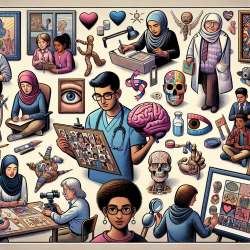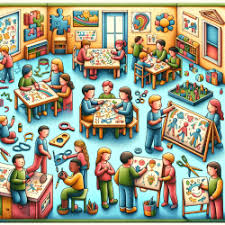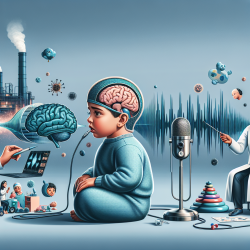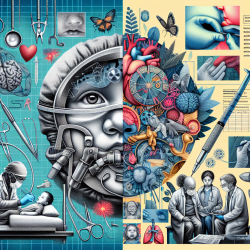Introduction
In the ever-evolving landscape of education, innovative approaches are essential to foster the holistic development of students. A recent narrative review, "Visual art instruction in medical education," highlights the profound impact of integrating visual arts into medical curricula. This approach not only enhances clinical skills but also cultivates empathy, communication, resilience, and cultural sensitivity among students.
Why Visual Arts Matter
The integration of humanities, particularly visual arts, into medical education addresses several critical gaps. These include the need for improved clinical observation skills, experiential learning for empathy, and a balanced emphasis on both technical and relational competence. Visual arts education encourages observation, reflection, and introspection, fostering a tolerance for uncertainty and ambiguity.
Key Findings from the Review
The review identifies five domains of focus within visual arts programs:
- Observation and Diagnosis: Enhances students' ability to observe and interpret clinical scenarios through guided art observation and clinical correlation.
- Empathy: Promotes understanding of emotions and mindfulness through art, enhancing empathetic communication.
- Team Building/Communication: Facilitates trust and collaborative communication through shared reflections and narrative building.
- Wellness/Resilience: Encourages self-care and mindfulness through journaling and art observation.
- Cultural Sensitivity: Challenges biases and promotes understanding through diverse cultural perspectives in art.
Practical Implementation for Practitioners
For practitioners looking to enhance their skills, incorporating visual arts into educational practices can be transformative. Here are actionable steps based on the review:
- Engage with Local Art Institutions: Collaborate with local museums to create structured programs that integrate art observation with clinical skills training.
- Adopt Validated Pedagogies: Utilize frameworks like Visual Thinking Strategies (VTS) and Artful Thinking to develop critical observation and thinking skills.
- Promote Interdisciplinary Learning: Encourage collaboration across disciplines to enrich learning experiences and foster diverse perspectives.
- Implement Reflective Practices: Incorporate journaling and group discussions to facilitate reflection and emotional processing.
Encouraging Further Research
While the review provides compelling evidence of the benefits of visual arts education, it also highlights the need for more rigorous research. Practitioners are encouraged to contribute to this growing field by conducting studies that assess the long-term impact of visual arts training on clinical skills and professional development.
Conclusion
Integrating visual arts into educational practices holds the potential to transform not only the skills but also the personal growth of students. By embracing this innovative approach, educators can create enriching learning environments that prepare students for the complexities of their future professions.
To read the original research paper, please follow this link: Visual art instruction in medical education: a narrative review.










